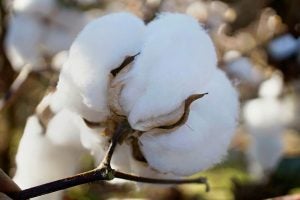Cotton is woven into the very fabric of our lives, from soft T-shirts to comfortable jeans and cozy bedsheets. It’s the world’s leading renewable textile fiber and the backbone of a global industry worth billions.
As climate change intensifies, cotton farmers face increasing challenges from drought and heat. However, new research offers hope for developing more resilient varieties that can maintain high yields even under water-stressed conditions.
An interdisciplinary team of researchers examined how different cotton plants respond to drought at the genetic level in a study recently published in the Plant Biotechnology Journal. They grew 22 varieties of upland cotton (Gossypium hirsutum L.) in Arizona’s low desert region, subjecting half the plants to drought conditions. By analyzing the plants’ genes and physical traits, the scientists uncovered some fascinating insights into cotton’s drought-coping mechanisms.
They found that two key regulatory genes, GhHSFA6B-D and GhDREB2A-A, play a crucial role in helping cotton plants manage water stress while maintaining fiber production. These genes act like orchestra conductors, coordinating the activity of hundreds of other genes involved in drought response and fiber development.
“We were excited to discover this direct link between stress tolerance and fiber yield maintenance,” said co-corresponding author Dr. Andrew Nelson, an Assistant Professor at the Boyce Thompson Institute. “It appears that over time, cotton plants have evolved this regulatory mechanism to help them cope with dry conditions while still producing the fibers that are so economically important.”

One of the most intriguing findings involves a gene called GhIPS1-A, which produces an enzyme important for synthesizing compounds that protect plants from drought stress. The researchers found that only one copy of this gene, inherited from the cotton plant’s African ancestors, responds to GhHSFA6B-D. This suggests that cotton’s ability to cope with drought has ancient roots predating its domestication.
Even more fascinating, the team identified a tiny genetic variation near the GhIPS1-A gene that appears to influence how well cotton maintains its yield under water-limited conditions. “This single DNA letter change was associated with higher fiber production in drought-stressed plants,” explained co-corresponding author Dr. Duke Pauli, an Associate Professor at the University of Arizona. “Such small genetic differences could be valuable targets for breeders looking to develop more resilient cotton varieties.”
As climate change leads to more frequent and severe droughts in many cotton-growing regions, developing varieties that can thrive with less water is crucial. This research provides valuable insights and genetic targets to guide those breeding efforts.
Moreover, the study highlights the importance of maintaining diverse cotton varieties. The range of drought responses observed among the 22 types examined underscores how crucial genetic diversity is for adapting crops to changing conditions.
In a world facing increasing environmental challenges, understanding how our most important plants respond to stress at the molecular level is more vital than ever. This study advances our scientific knowledge and paves the way for more resilient and sustainable agriculture in the face of climate change.


